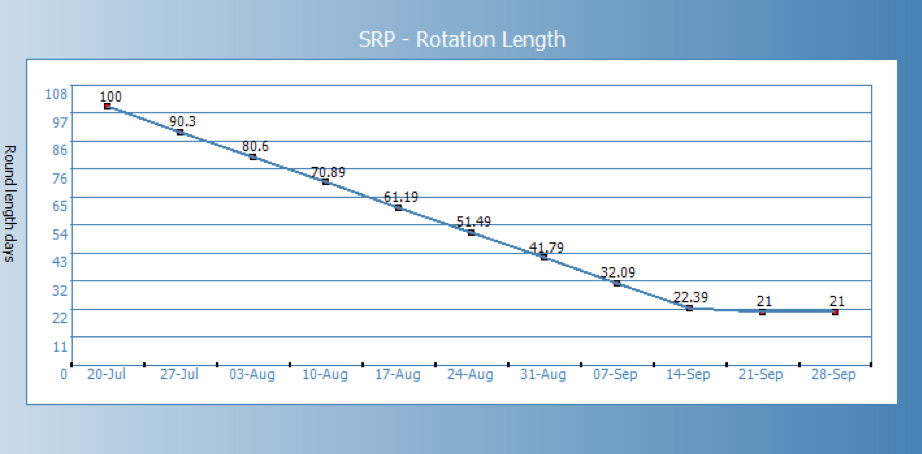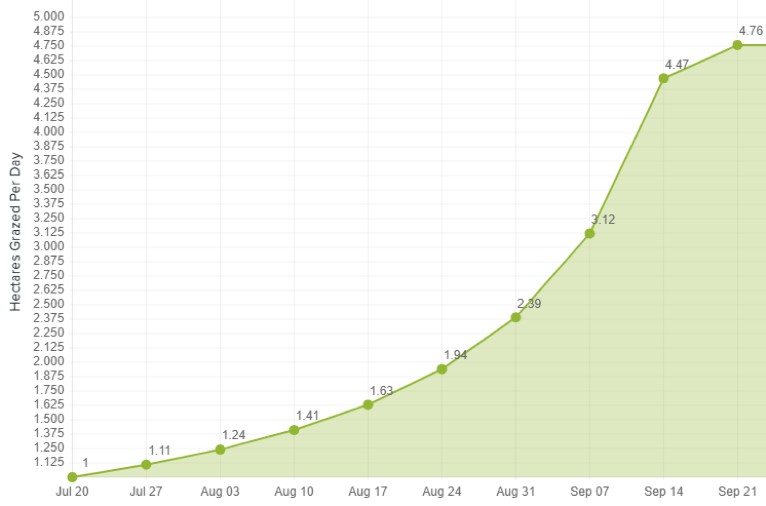The result of this has meant that many farms have achieved their target body condition score (BCS) and high average pasture covers (APCs). This means we are in the box seat to achieve a great start to the season. So, how do make sure we do not waste this good position?
Spring rotation planner
A spring rotation planner (SRP) is as fundamental as having cows at 5.0 BCS (R2s and R3s at 5.5) and an APC of 2,200+ at the planned start of calving (PSC). The SRP ensures that we work our way down through the APC to meet a typical balance date of when grass growth is meeting cow demand.
We used to set the PSC to about six weeks from balance date. However, with increased availability of supplements over the past 20-30 years, PSC has moved out to be about eight weeks from balance date.
Either way, the principle is the same — trying to allocate the pasture in an accurate way so we don’t run covers too low and fall into a feed deficit that cannot be managed.
How does it work?
A SRP allocates more area each day to be grazed from the start of calving from a winter round length (for example, 90 to 100 days), through to when feed supply (pasture growth rate and supplements fed) matches with cow demand. In the King Country region, this is usually around mid to late September. At this stage you want to be on the round length that suits your stocking rate in order to maintain this round through October and November, which is usually around the 21 to 25-day mark.
The simplest SRP can be created by drawing a straight line on a piece of paper from your PSC to feed balance date (for example, from 20 July to 15 September). The round length (days) is on the Y-axis from 1 to 100 days. The date is on the X-axis. See the example below.

The graph below shows the increase in area that you can use per day as the round length speeds up.
Notice how this really ramps up during the last three weeks, as the cow’s ability to increase her intake has developed and the majority of the herd has calved.
This demonstrates the importance of holding the round slow to start, as it ensures you have the APC still above 1,900 to complete the job.

Where can I get one from?
Either create one yourself following the examples above, or there is a template on the DairyNZ website which allows you to put your own farm details in and print off the results.
At FarmWise we have a more detailed version of the SRP that puts in your calving rate and supplements available for feeding. This therefore allocates pasture and supplements more accurately to your dry and milking cow mobs, to ensure each mob is being fed at the correct rate.
Tips when starting with a high APC
This year there is a risk that if the high APCs are still present by the PSC, we won’t get the right mobs eating the right target pre-graze covers.
Usually we can save all the 3,300+ covers for the springer and dry mobs, and get the milkers to start in the 3,000 to 3,300 covers and work down to a 2800 to 2900 target pre-graze.
If you do have a high APC, then you need to run the more detailed SRP. With this version, it will calculate from your calving rate report exactly how many hectares you will need to reserve for all the calving mobs. These mobs are best to deal with the highest covers, where practical (excluding drains, steep hills and so on).
Then you take your latest pasture walk data and work out what pre-graze covers the milkers are going to have to deal with. For milk production, 3,000 is best, but you may have to ask the milkers to deal with a few 3,500 pre-graze paddocks to start with. Better to do that at the start than get to September and realise you have some 4,000 covers that your small mob of dry cows cannot deal to.
If you have not used a SRP before, try one this year to ensure the best use of pasture and feed on farm while enjoying the benefits of a more relaxed spring, and better feed management.
Darren Sutton
FarmWise consultant




